Introduction
Tumblr is like its own little world.
It’s split up into different communities, each with its own language, culture, and code of conduct.
However, unlike many other social networks, there are almost no native advertising options. It’s not really a place for brand messages.
Unless, of course, you know exactly what you’re doing.
Jason Wong is one of those people who do. He’s been able to launch many different products aimed at the Tumblr market, and even consults for large brands about how they can do the same.
His latest product, The Holy Méme Bible, sold $200,000 in sales in just three weeks.
I’m going to show you exactly how he did that.
But first, you need to understand how he approaches product development to see how something like this is even possible.
Let’s take a look.
The “Lean Startup” approach to new physical product creation
The traditional startup raised money and built in secrecy before unveiling their product to the masses.
The problems with this approach are numerous:
- You have no idea — while building — if people are going to want what you’re selling, and
- You’ve already committed so much time and energy to this approach that it’s tough to turn back or fix issues after realizing your mistake
The Lean Startup famously changed all that. Released about a decade ago, the book (and movement) said you should ship early, iterate, and learn-as-you-go.
The Lean Startup works today (when it may not have years ago) because of the dramatically lowering costs of technology and product creation, along with increased communication channels and reach to millions of people across different social networks.
Jason Wong has recognized that, capitalizing on it to the extreme.
The Méme Bible initially only cost $450 bucks to test, because that’s how much Jason spends on his product ideas. He intentionally keeps them scaled back to limit his downside.
In other words, The Méme Bible wasn’t his first (or last) product launch. It was just the one that finally took off.
Oh. And it only took two weeks of product development, with zero time spent on formal market research.
“Well, for a lot of things, even for my previous businesses, a lot of them it’s just trial and error. Honestly, I created this book in two weeks. You know, every one of the designs, the publishing, the printing was done in a very short span of time, so there was really no time for me to do market research and analysis or anything. It’s just really print, sell. If it sells well, reinvest that money, and print more.”
Instead of spending months or years investigating his market, preparing detailed businesses plans, and pouring over product design, he shipped.
The ultimate minimum viable product (MVP).
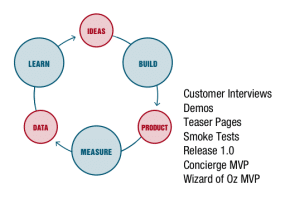
He already had an idea of what the market was interested in because Jason was already social media influencer in the same space. So he decided instead to fail fast by releasing new ideas to gauge feedback in real-time, and pivot or iterate afterward.
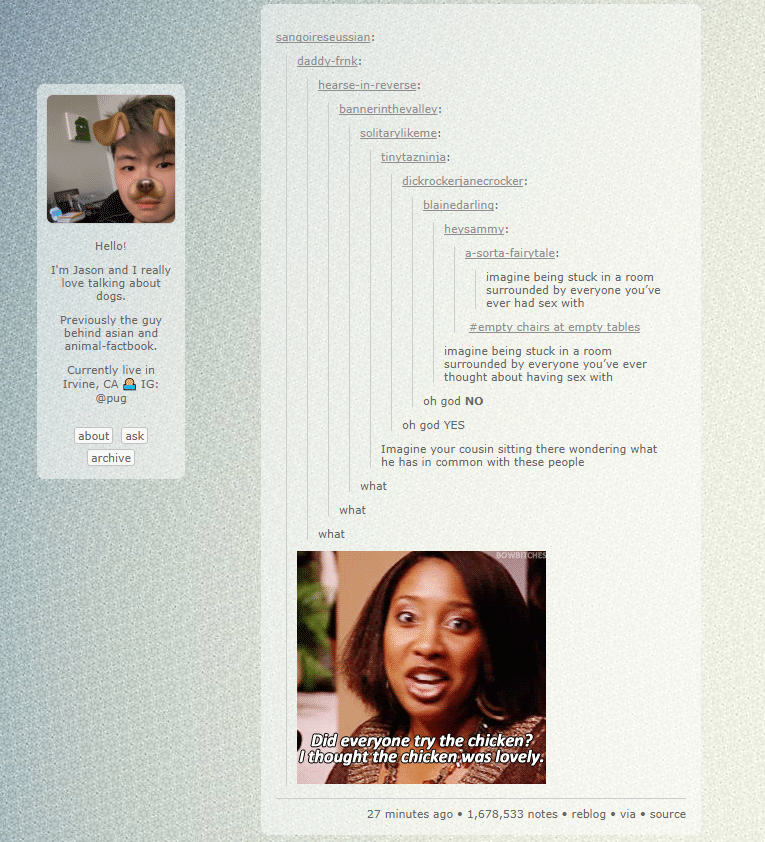


Product creation involves a lot of out of pocket costs. You have to pay, up-front, for raw materials, production, and shipping — without ever knowing if (or when) you’ll see that money come back to break-even.
That’s why condensing the production cycle as much as possible is so smart (beyond just limiting your initial capital investment): It reduces the amount of time to break-even.
Jason had 250 copies printed around November 27th, totaling $450.



“So I put all of that into the book, printing it not knowing whether it will be a success or not. I kind of calculated how much I would need to sell to break even.”
Jason went all-in but on a small scale and printed 250 copies. Worst case scenario, he was out a few hundred bucks and only two weeks of his life. No big deal. Just come up with the next idea and try again later.
If you’re unable (or unwilling) to risk even that, you could also do a smoke test.
Smoke tests are used in new product development to gauge real market demand (based on if people are going to pay you or not). So there’s no bias or misunderstanding.
Many times, you’ll advertise a new product for sale and try to entice buyers, even though you don’t technically have any of those products developed.
For example, instead of spending months (and millions) building out a product that nobody was potentially interested in, Flowtown used a series of smoke tests.
Here’s how they did it.
Step #1. They always wanted to be a product at the end of the day, but they actually started out by running it as a paid service, first.
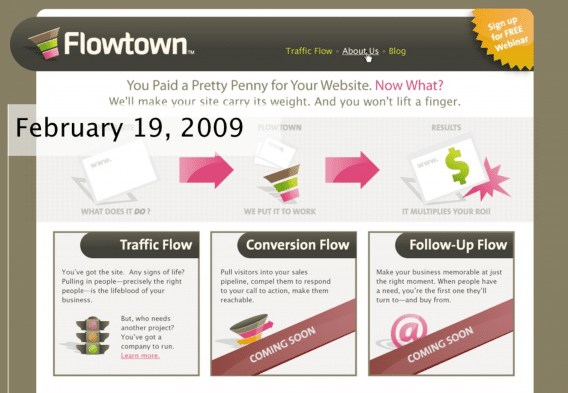


This allowed them to get real customers, work on real problems, test and refine their approach. (Pulling in cash flow didn’t hurt, either).
Step #2. Once they were ready to head down the product path, they came out with more smoke test iterations to see which resonated most with the market.
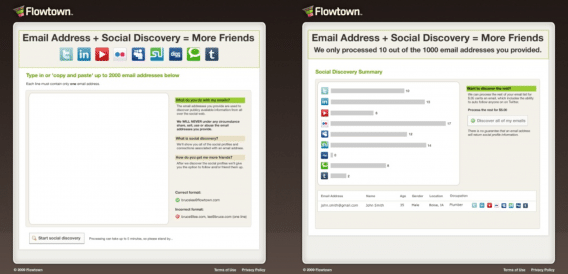


Step #3. Before finally figuring out the ultimate direction based on seeing which features and products people were most likely to hand over their hard earned cash for. 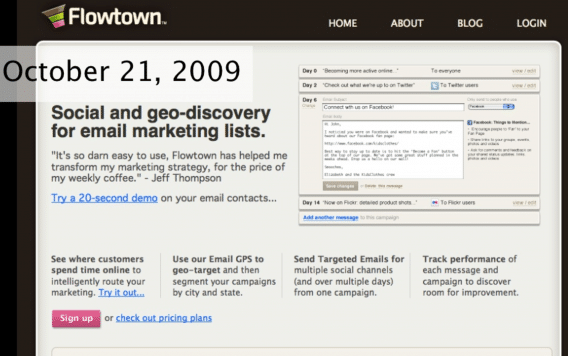


Just a few years later they had over 35,000 customers on file and were acquired by Demandforce.



So they knew the overall direction they wanted to go. But they had no idea exactly which path to take to get there.
Instead of blowing tons of money and time, they continually released small iterations and experiments to the market. Then, the buying public ultimately decided their path for them.
How to deal with fulfillment problems on the fly
Jason’s Lean Startup approach to eCommerce helped limit his downside.
But it didn’t account for the upside, either.
He only had 250 books on-hand when it came time to sell. And each batch of books takes at least a week or two to get printed (not to mention, actually ship out to the customer, etc.).
So when sales did start pouring, there was a problem.
The book went on sale around the end of November, and he wanted to ship all pre-orders by Christmas. But when over 10,000 books were sold (far exceeding the 250 he had on hand), he went into rush mode.
He was already rush ordering everything just to try and keep up. However, there was simply too much volume for his friends-in-the-garage approach of fulfillment. (Especially when Jason personally had zero experience in printing physical media.)
So he started looking for a professional fulfillment center ASAP who could handle this volume of sales. Online reviews lead him to a printer near his place in San Francisco that could deliver on two-day production time, initially.
But eventually, he even outgrew that. So he found a fulfillment center in Texas and another printing center located nearby who could move product between the two quickly.
The secret to figuring all of this out, with zero prior experience, was that there is no secret. Just hustle and courage.
“I mean, there wasn’t really any special tactics that I used to find these sources. It’s just Googling, and then depending on other people’s experience, and then going with that.”
Invest in building an unfair advantage helps connect you to the “right audience”
“A real unfair advantage is one that cannot easily be copied or bought,” according to Jason Cohen, founder of tech multiple tech companies including most recently, WP Engine.
The point is that in today’s hyper-competitive world if your product and business strategy can be copied, it will.
Which means you need an unfair advantage which others can’t replicate or copy. One that gives you a leg up, or a head start, on the competition.
Jason Wong has spent years cultivating a massive audience. He directly has over 1.4 million followers on Tumblr, with access to ~30-40 million people through other influencer friends.
For example, he’s spent years doing unscalable activities like text-based meetups in order to build “closer interpersonal relationships” with his audience. That’s years literally turning strangers into friends and then partnering with others who’ve done the same.
The result is massive trust built across large groups of people.
Not just any people, though. A very specific group who share the same idiosyncratic personality. Everything else was tailored around that, including the actual product.
“So a lot of memes do originate from Tumblr or made popular by Tumblr, so the people on there are already familiar with this kind of content. They know what is going on in the books.”
In other words, the elusive product <> market fit.
For example, the testimonial page for the Méme Bible featured funny, satirical reviews that his audience would naturally appreciate.



Having that right audience was very important. According to Jason:
“It’s really about the networking effect and knowing the right people. You don’t need a million followers on your stuff to do what I do. You just need to find the right market and then find the right marketing tactics to go about it.”
Today there is over 420 million Tumblr users. Most of those (39%) are under the age of 25. And the vast majority of Tumblr posts are image-based.
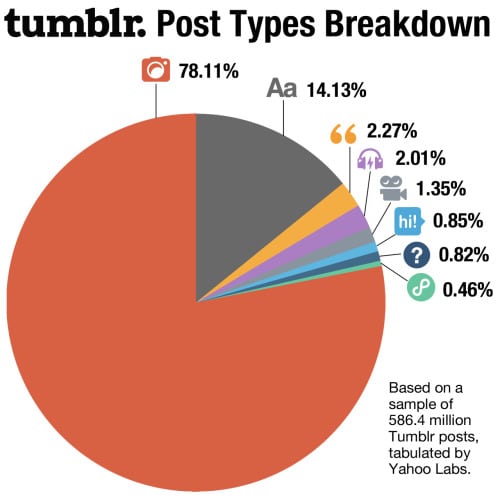


Tumblr’s culture is similar to Reddit, in that there are sub groups and different communities within the larger ecosystem. So each one of those will then have its own personality, language, style, and more.
Understanding the network and audience you’re marketing to is crucial no matter where you are, but even more so on Tumblr, which has managed to maintain an ‘underground appeal’ to a lot of niche markets.
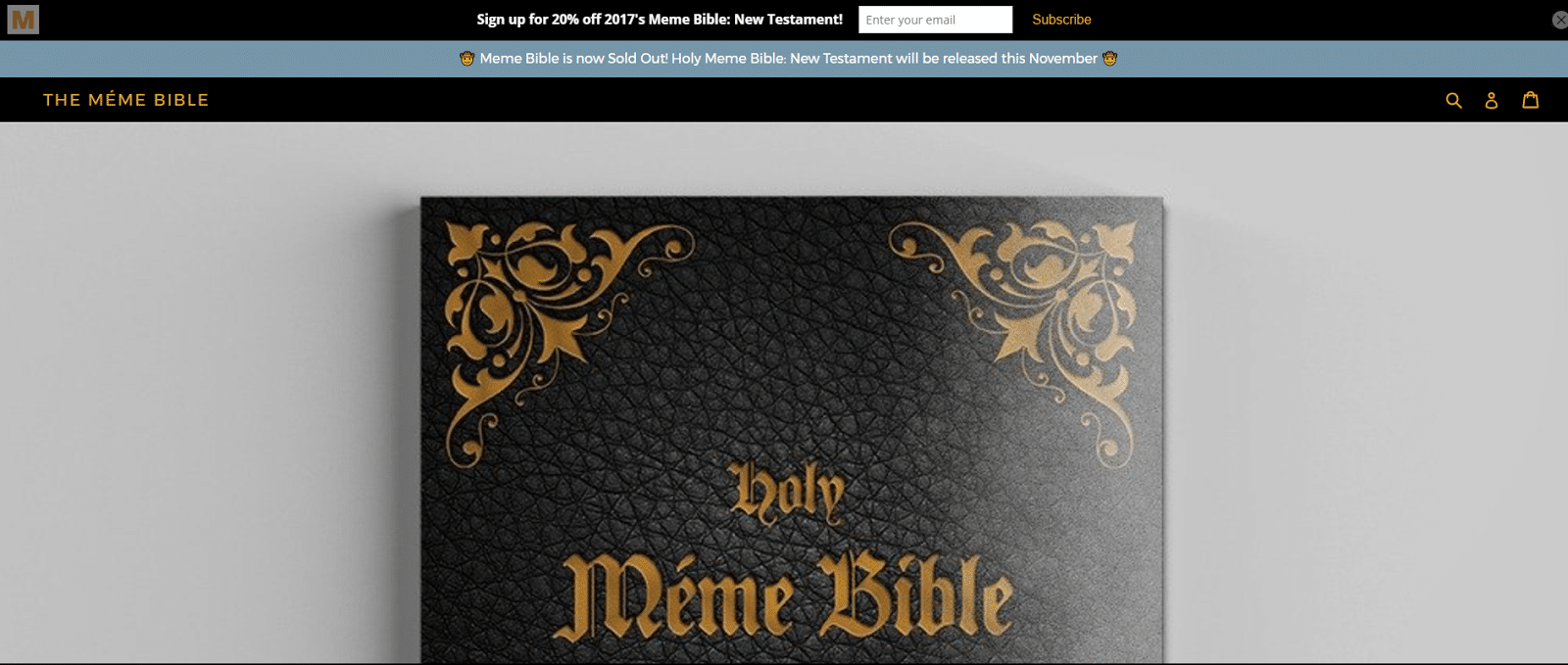


After introducing the product to his own audience, Jason expanded to the second piece of his unfair advantage: Other people’s audiences.
He would reach out to other large influencers on Tumblr and work with them on cross-promotions, as advertising partners, or affiliates.
But he didn’t just ask them for a favor, first.
Instead, he would help push their own products out. He worked with these people exclusively to help them succeed. So they were essentially ‘indebted’ to him and willing to return the favor when the time came.
“I think a lot of people need to remember that they depend on you and you depend on them so there’s a mutual beneficial relationship.”
So although Jason had his own large audience to promote his new product, all of this time spent building with other influencers at the same time allowed him to reach a new, massive scale within days of launching.
“By the end of the sixth or seventh day, most of Tumblr’s influencers have content posted on their blog in one way or another. We did a fairly large campaign on Tumblr.”
The Sales Tactics that Generated $200k in 21 Days
Getting the word out to your own audience or through influencers is only the first step.
Some customers require almost a dozen different ‘touches’ as they’re bouncing from device to device before they’re ready to buy.
That means you need a multi-pronged effort. Influencer campaigns at the top of your funnel are great. But you’re going to need a consistent follow-up in other channels to keep up the momentum.
Picture this:
Influencer campaigns and promotions can help drive traffic back to your site. But average eCommerce conversion rates are only around 1-3%. That means the other 97-99% are leaving your site.
Unless you do something to bring them back.
Jason started with two Facebook ad tactics to solve this problem:
- The first was using custom audiences to retarget website visitors, and
- The second was using retargeting people who added it to their cart with discount coupons.
Here’s how it works.
Step #1. First, Jason installed the Facebook Tracking Pixel on his site. You can grab this code directly from Facebook, and then even use their Facebook Pixel Helper Chrome extension to double check that you’ve set it up correctly.



Step #2. Then came the influencer campaigns:
“What I really focused on was funneling enough traffic through social media sites like Twitter, Instagram, and Tumblr. My first few days I was getting about 15 to 20,000 visitors a day. By the fourth day I had about 50,000 visitors and that’s 50,000 worth of user data.”
The trick to generating these numbers isn’t to sell to people straight-away, but use content marketing to help you bridge the gap.
“So content marketing is essentially promoting your product through its ideas, but not the content itself. You want to promote an ideology between revolving your product.”
Repeatedly hitting people over the head with sales messages would only turn them off. They’d eventually start tuning you out.
But appealing to their interests, first, helps you to get the attention needed to eventually show them your related product.
Step #3. This entire time, the Facebook Pixel is ‘tagging’ each and every user who passes through his site. So then you can go in and create a brand new custom audience of people who just visited your website.
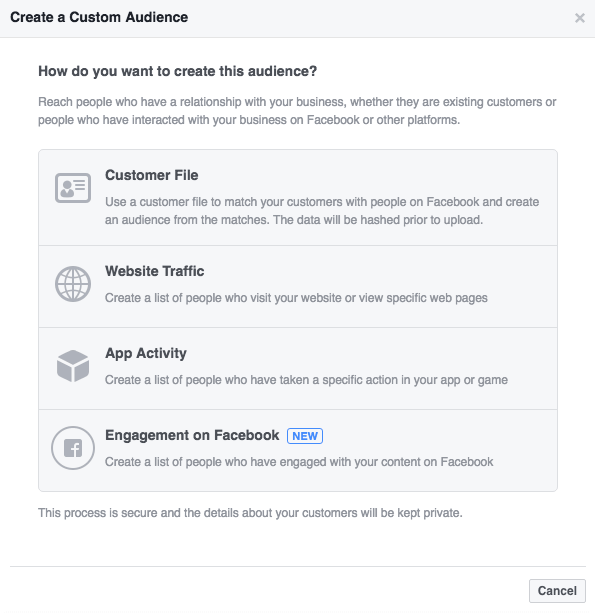


If you have a low traffic website, you can create a custom audience from people who’ve engaged with your Facebook page. And you can even track people who view your content, like watching your videos, too.
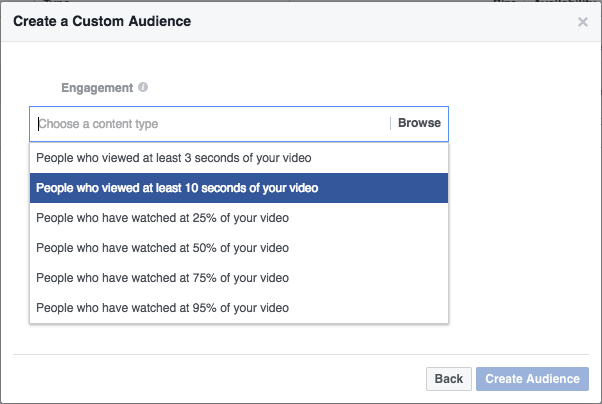


So you’re creating ads in this case specifically for people who visited your site, checked out your product, but didn’t buy for whatever reason.
Step #4. And that’s when Jason would follow up with automated retargeting campaigns:
“Whenever they go on Facebook to check their newsfeed, to talk to their friends, they will start seeing advertisements for The Meme Bible offering a discount. That has been very successful for us. I think we did about 6-7,000 just in sales from that in a few days.”
Multi-product companies can do this same approach, but automatically and at scale. Facebook’s Dynamic Product Ads run off of a spreadsheet database. So you can input your product details, like this:
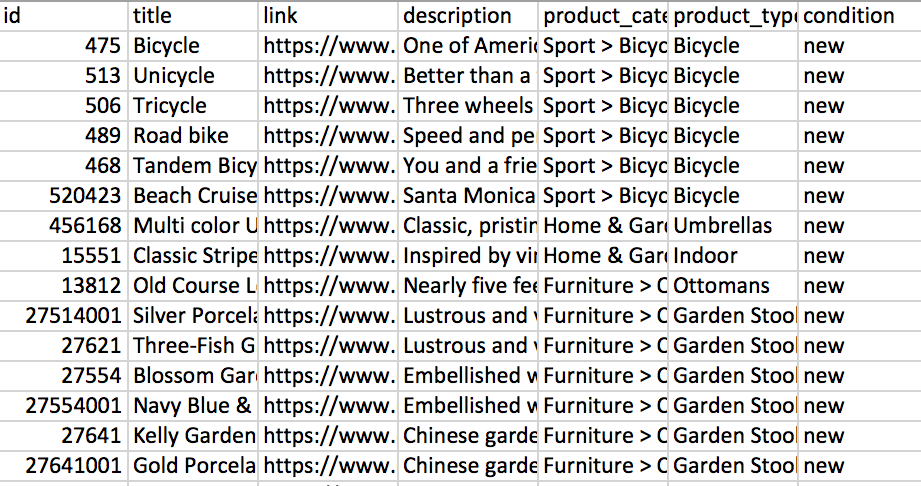


And then create an ad ‘template’ that will automatically pull in these details based on which product people viewed on your site.
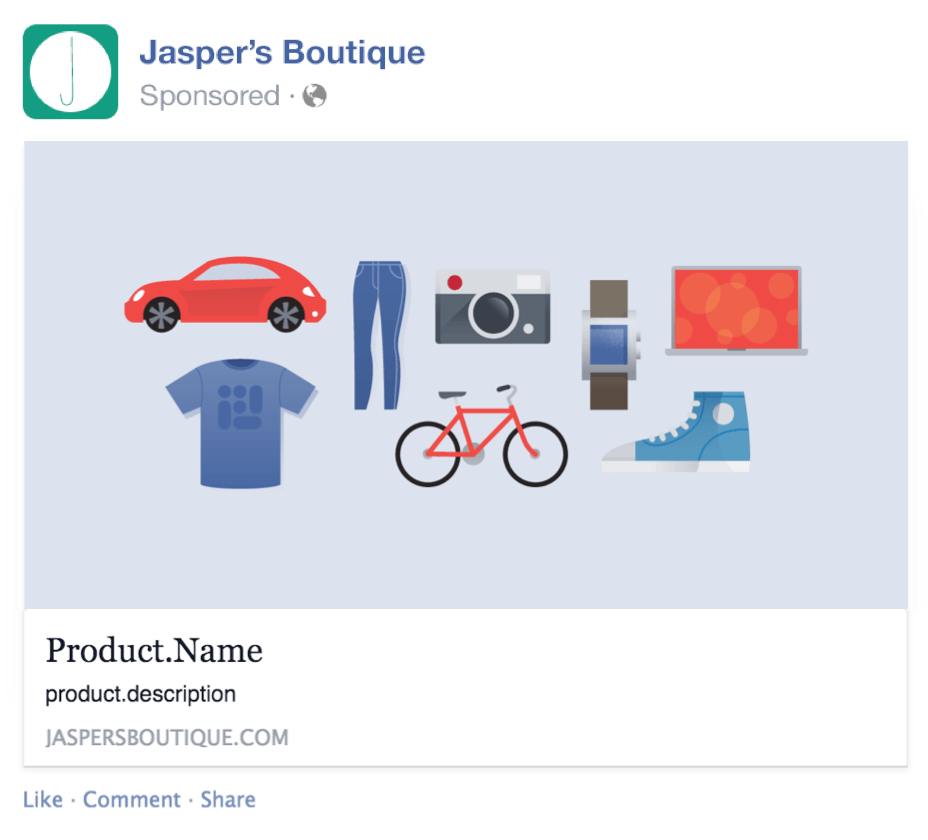


Step #5. Jason also took this one step further, creating another ad campaign just for people who added the product to their cart.
These people showed you that they were interested in buying and were so close to converting before leaving your site. So Jason created an even deeper discount (15%) to push these people over the edge.
He then also sends an automated email around 18 hours after leaving your site (so the product is still fresh in their minds).
Step #6. The best part about these ads is that they’re relatively straightforward. There’s no need to be overly clever or obsess over excellent copywriting.
“There’s really no need to really describe your product, no need to write a paragraph about it. It’s just, you know, ‘Here’s a discount code. You can use it if you come back.’”
The rationale?
Most people don’t care about reading your product description again. They just want to know, why they should come back?
So give me a reason to!
Let’s recap…
- Spend your time and effort to build an unfair advantage. In Meme Bible’s case, it was niche audience. Hard to duplicate. Having the right audience is more important than having a large audience.
- Once you have your audience, created a prototype product with a your specific audience in mind. You should already know what appeals to them (at some level) without requiring weeks or months of costly market research and product development.
- Execute and prove demand FAST with a live test (or even a smoke test) to get real-time feedback from your audience.
- When things do pick up, they tend to do so fast. So use the new sales revenue to reinvest back into creating more products, faster, and streamlining shipping. That way you can cut down on your own personal involvement and keep customers happy with fast product delivery.
- All of the pieces are in place by this point. So all you need to do is continue to follow up. In addition, use retargeting campaigns to re-offer the part of your audience who expressed some interest.
What do you think?
Have you tried promoting content and selling products on Tumblr? Or connected with Tumblr influencers to advertise?
We’d love to hear your thoughts in the comments below.
Share with us what has worked for you, or any ideas you have about improving your Tumblr strategy.
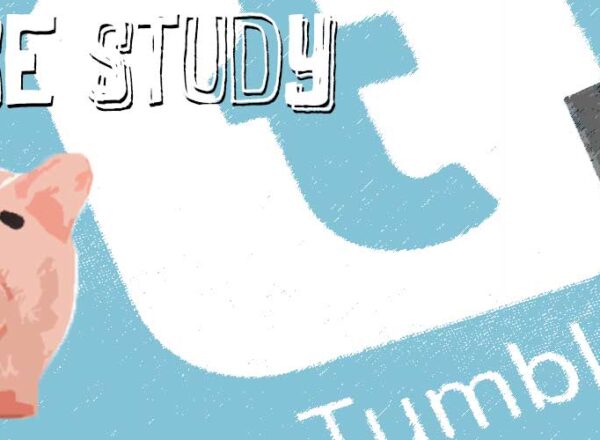
Comments